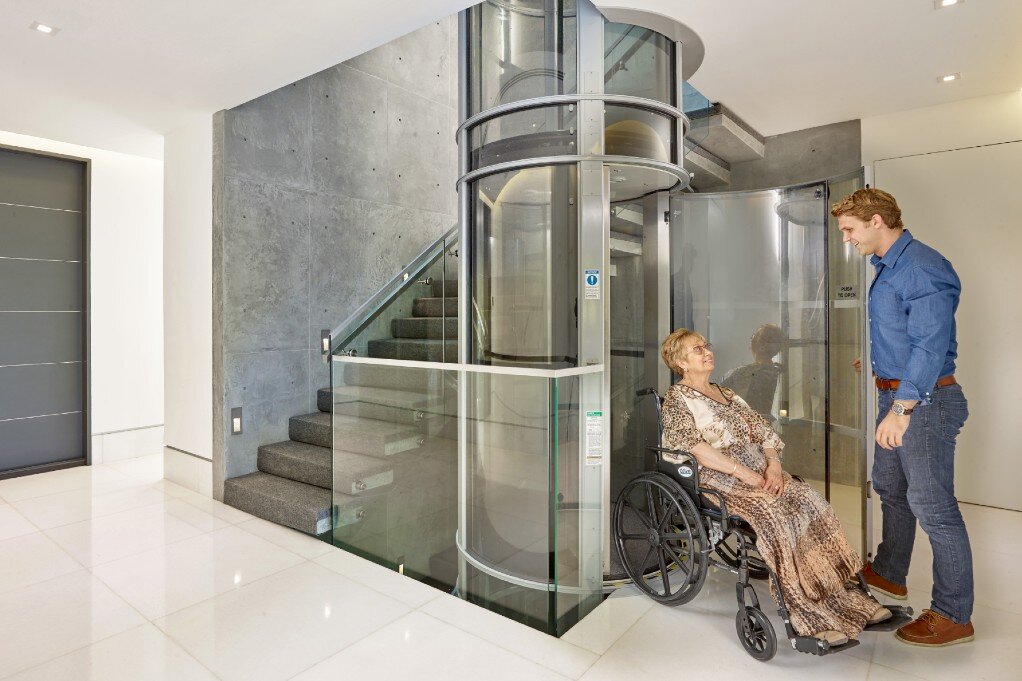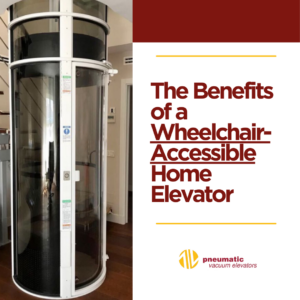Elevators have revolutionized the way we navigate tall buildings, providing a safe and efficient means of vertical transportation. Two common types of elevators are pneumatic and hydraulic elevators. Both systems offer unique advantages and serve specific purposes. In this article, we will compare pneumatic and hydraulic elevators, exploring their key features, efficiency, and performance. While hydraulic elevators have been widely used for many years, pneumatic elevators have emerged as a newer, innovative technology. By the end of this discussion about Pneumatic vs Hydraulic Elevators, it will become evident why pneumatic elevators offer several compelling advantages. Moreover, why they are an excellent choice for modern architectural designs.
Overview of Pneumatic Elevators
Pneumatic elevators (we can also call them vacuum or air-driven elevators) move the elevator car by changing the pressure of the air inside the elevator. A cylinder-shaped lift car goes up and down a shaft as part of these devices. Using a vacuum pump or air generator, the air pressure above the car can be lowered to make it rise and raised to make it fall.
Pneumatic lifts have a number of clear benefits. First, they are popular for taking up less space than standard lifts because they don’t need a machine room or a balance system. This makes them great for putting into old houses or places where there isn’t much room. Also, because they use less energy, air lifts have a smaller impact on the earth. They use less power than hydraulic lifts because they squeeze and release air with less force. Also, these lifts are smooth and easy to ride because they have modern control systems that keep the air pressure changes under control.
Overview of Hydraulic Elevators
Hydraulic elevators have been widely used for decades and operate using a hydraulic fluid-driven system. These elevators consist of a fluid-filled piston located beneath the elevator car. When the fluid is pumped into the piston, it pushes the car upward. The downward motion is achieved by the controlled release of fluid back into the reservoir.
Hydraulic lifts also have their good points. They are popular for being able to move a lot of weight, which makes them good for big buildings with a lot of traffic. The hydraulic system makes it possible to level each floor smoothly and accurately. In this way, it makes sure that guests have a nice ride. Also, hydraulic lifts are very stable, last a long time, and need very little upkeep.
But there are some problems with hydraulic lifts as well. They need a room just for the gear and a lot of space for the hydraulics. It makes them less useful for buildings with limited space. Also, the hydraulic fluid used in these systems is bad for the environment if it isn’t taken care of properly. Leaks can happen if it isn’t checked and maintained regularly.
Hydraulic vs Pneumatic Elevators: Performance Comparison
When comparing the efficiency and performance of pneumatic and hydraulic elevators, several key factors come into play.
- Energy Efficiency: Pneumatic elevators have a significant advantage in terms of energy efficiency. Since they rely on air pressure differentials, their power consumption is lower compared to hydraulic elevators, which require the constant operation of hydraulic pumps. The reduced energy usage translates into cost savings and a smaller environmental impact.
- Space Utilization: Pneumatic elevators have a clear edge in terms of space utilization. As mentioned earlier, they do not require a machine room or counterweight system, allowing for flexible installation options in both new and existing buildings. Hydraulic elevators, on the other hand, require a dedicated machine room and occupy more floor space, limiting their suitability for compact architectural designs.
- Installation Flexibility: Pneumatic elevators offer greater installation flexibility compared to hydraulic elevators. The absence of a machine room and the smaller footprint of pneumatic systems make them easier to install in buildings with limited space. They can be retrofitted into existing structures without significant modifications or disruptions to the building’s layout. This flexibility extends to architectural designs as well, as pneumatic elevators can be integrated seamlessly into modern and minimalist aesthetics, where space optimization is a priority.
- Speed and Performance: Hydraulic elevators traditionally have an advantage in terms of speed and lifting capacity. They are capable of transporting larger loads and reaching higher floors more quickly. However, with advancements in technology, pneumatic elevators have made significant progress in this area. Modern pneumatic systems now offer comparable speeds to hydraulic elevators, ensuring efficient vertical transportation for passengers. While the lifting capacity of pneumatic elevators may be lower than that of hydraulic elevators, they are still suitable for most residential and low to mid-rise commercial applications.
Hydraulic vs Pneumatic Elevators: Efficiency Comparison
- Noise and Vibration: Pneumatic elevators are generally quieter and experience less vibration compared to hydraulic elevators. Hydraulic elevators, due to the operation of hydraulic pumps and the flow of fluids, can produce noise and vibrations that may be noticeable to passengers. Pneumatic elevators, on the other hand, utilize air pressure differentials, resulting in a smoother and quieter ride experience.
- Maintenance and Reliability: Both pneumatic and hydraulic elevators require regular maintenance to ensure optimal performance and safety. However, pneumatic elevators generally have simpler mechanisms and fewer moving parts, reducing the likelihood of mechanical failures. Additionally, the absence of hydraulic fluids in pneumatic elevators eliminates the risk of leaks or contamination. Hydraulic elevators, while highly reliable, require careful monitoring of the hydraulic fluid levels and regular maintenance to prevent issues associated with fluid leaks or degradation.
Conclusion
In conclusion, hydraulic lifts have been the standard in the business for a long time. But pneumatic lifts have a number of benefits that make them a good choice for modern architecture. Pneumatic lifts are the best when it comes to saving energy, using space well. They are also easy to install and make people feel comfortable. Pneumatic lifts are a good choice for both homes and businesses. They have a smaller impact on the environment, run more quietly, and provide a better ride.
Even though hydraulic lifts still have their place in high-rise buildings with a lot of traffic, pneumatic lifts are the most popular choice for many builders, building owners, and riders because they are flexible, efficient, and have a unique design. As technology keeps getting better, hydraulic lifts are likely to get even better in terms of how much they can lift, how fast they move, and how well they work overall. This will cement their place as a modern and efficient way to move up and down.








